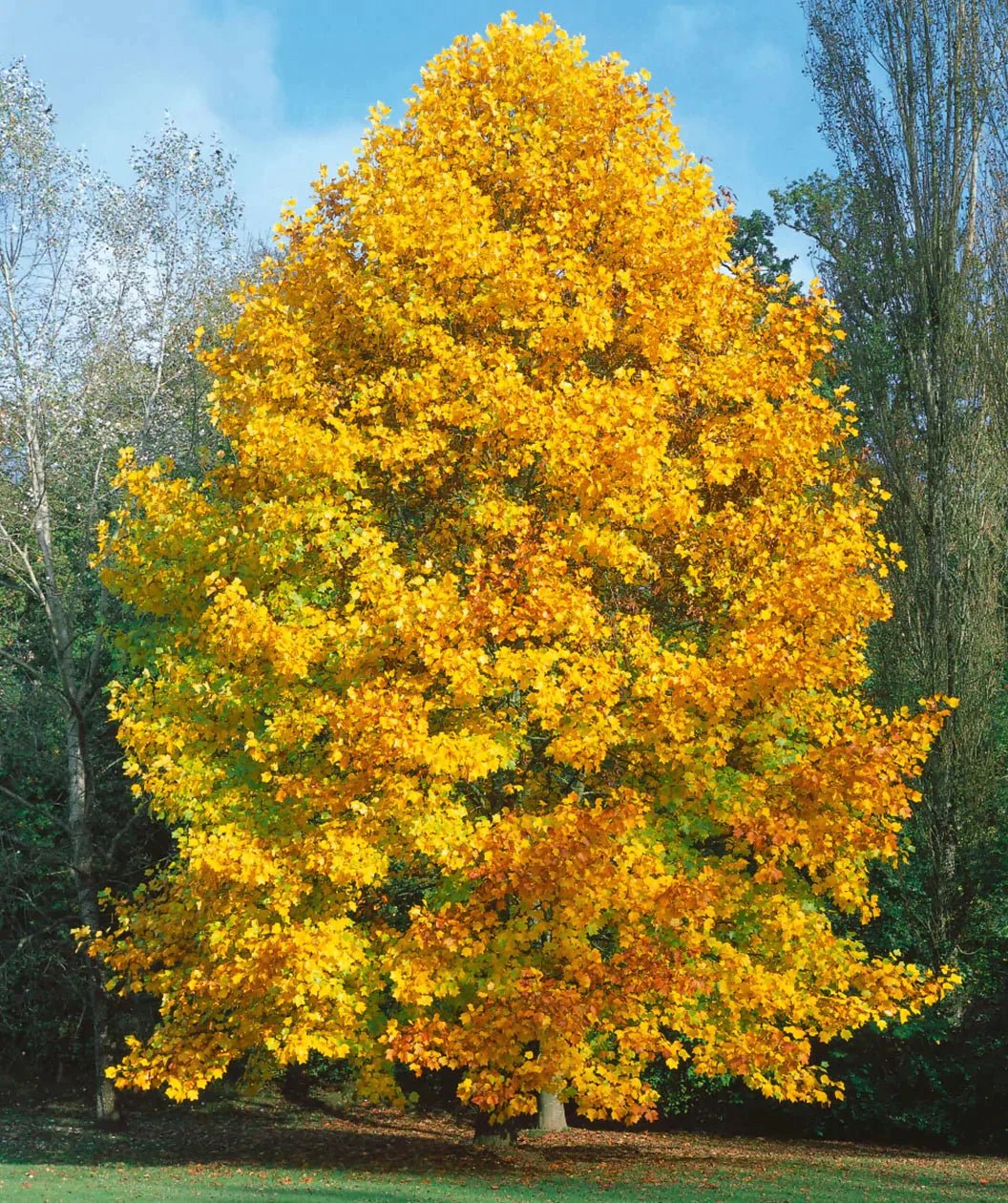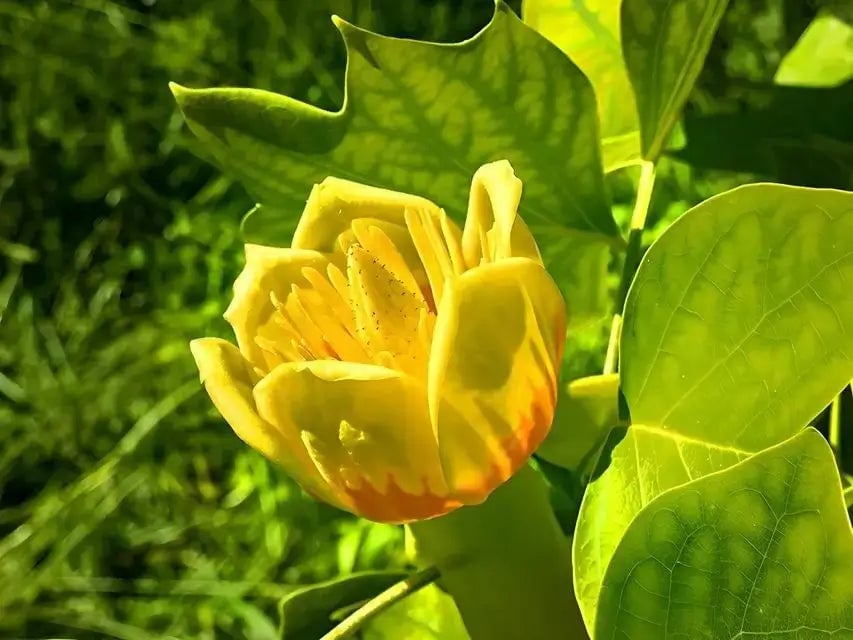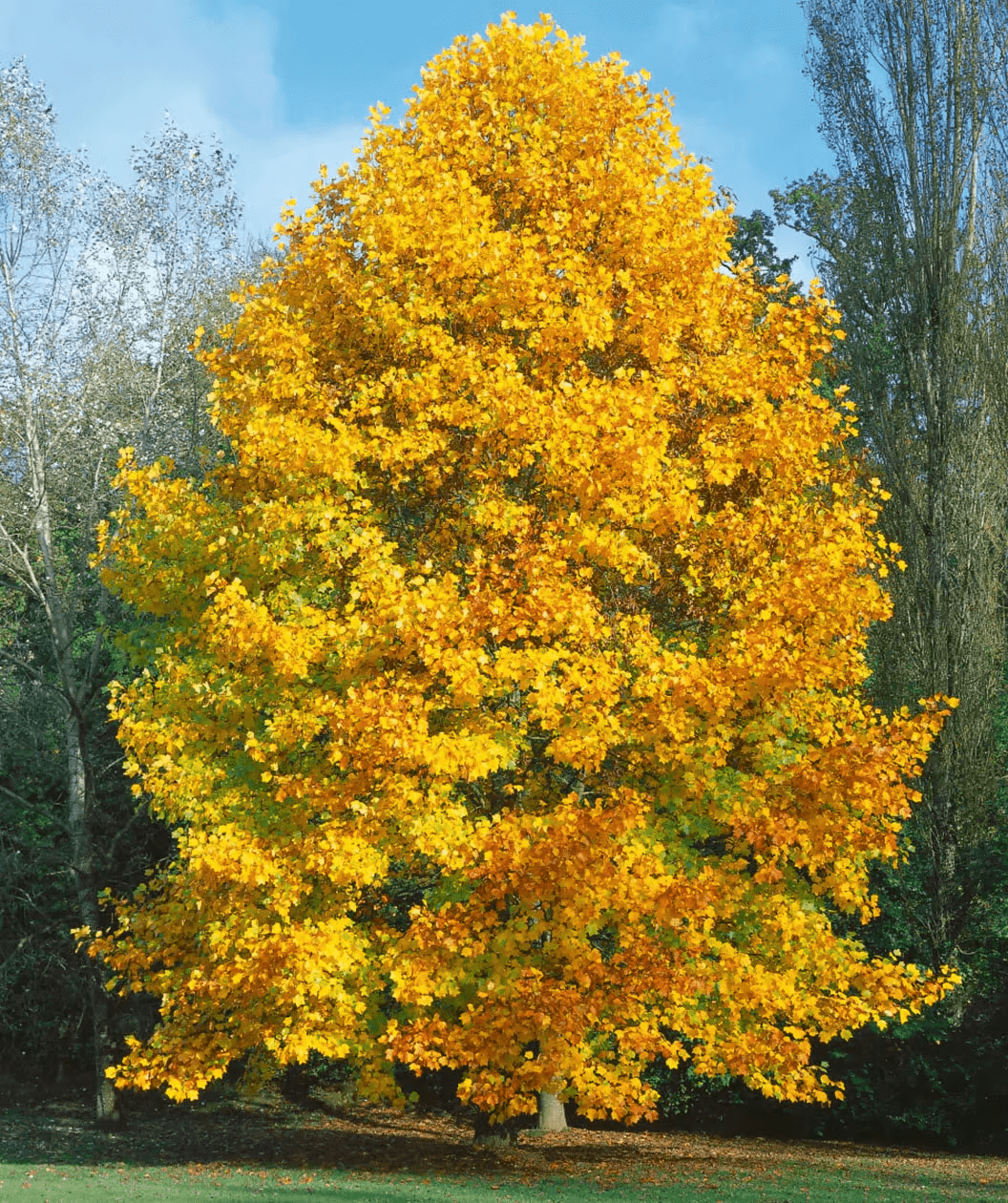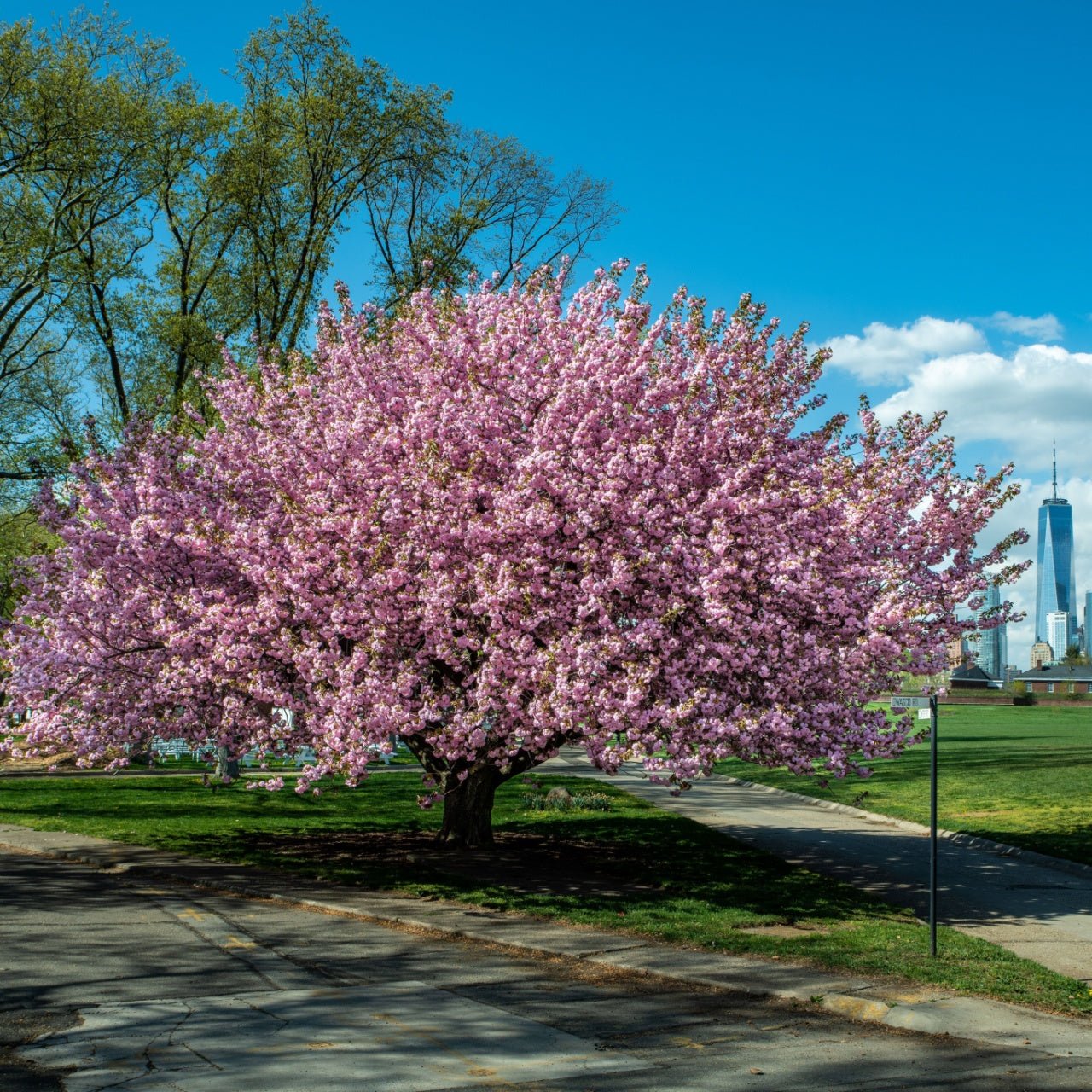




Tulip Poplar Tree
Vibrant, colorful spring blossoms
Provides excellent shade coverage
Strong, durable hardwood for landscaping
Thrives in
ZONE 4ZONE 5ZONE 6ZONE 7ZONE 8ZONE 9This plant ships:
Ships Week of May 12th1 Year Guarantee on all plants
Tulip Poplar Tree: Liriodendron Tulipifera
The Tulip Poplar is a fast-growing, robust tree that will grow tall and have beautiful green leaves and fragrant tulip-shaped flowers. A standout for its ease of maintenance and visual interest, this would be an excellent addition to any large property.
They are easy to plant and a great choice even for novice gardeners. These grow best in well-drained soil and in a location with maximum sunlight. To plant this place the root ball in a hole twice as deep, plant it, and fill it in with fertile soil. Fill in deeply for roots.
Tulip Poplar Tree Is Easy To Maintain
The simple, low-maintenance type requires little maintenance after planting except for watering in prolonged dry spells and some pruning to form the canopy. The flowers are bright greenish-yellow with orange centers in late spring and early summer.
Tulip Poplar Trees are fast Growing
They have tulip-like blooms that draw in pollinators and add a pop of elegance to your landscape. Its large, glossy green leaves go golden yellow in the fall, providing a stunning season-end effect. They can last over 100 years if kept properly.
They spread quickly, often reaching 60 to 90 feet, and have a lifespan that will make them a lifelong fixture in your landscape. Their flowers generally bloom for a few weeks each spring, and their beautiful foliage lasts through the fall before being shed for wintering.
TN Nursery Offers Stunning Native Plants
TN Nursery are healthy, tender plants that can take root easily in your garden. Their versatility and beautiful season changes make them an all-time favorite in any outdoor room.
This Is How Your Plants Will Look upon Delivery

Bloom Season
Summer
Bloom/Foliage Color
Yellow
Height at Maturity
Over 25 Feet
Care
Tulip Poplar trees thrive in well-drained soil with regular watering, especially during dry spells. They benefit from occasional fertilization in spring. Trim in winter or early spring to preserve shape and remove dead or damaged branches.
Plant Reproduction
Sugar Tulip Poplar Tree spreads by seeds, with wind dispersal.
Plant bare root trees during the dormant season in early spring or late fall (November through April). Dig the hole twice as wide as the roots so the soil is well-drained. Position the tree so the root flare is at or just above ground level. Fill the hole back with the soil you dug from and water. Maintain soil moisture, especially in the tree's early years, by providing deep, regular watering. Apply a 2-4 inch mulch away from the trunk at the base to retain moisture and suppress weeds. Prune trees during the first few seasons to establish strength and resilience, remove damaged branches, and continue maintenance pruning as the tree matures. Regularly inspect for pests and diseases and apply integrated pest management practices. Protect young trees from mechanical damage and extreme temperatures with tree guards, and stake them if necessary for support, removing the stakes after one or two years.
Shipping date depends on the date displayed and chosen when you order from the product's page.
We only accept returns on plants verified dead. If you think your plants have died, we offer a 1 year warranty, please use this File a Claim Link to verify dead plants and start with return warranty process.







Stunning Aesthetic:
Vibrant green leaves turn brilliant yellow in fall, offering seasonal beauty.
Rapid Growth:
Reaches up to 70 feet quickly, enhancing landscapes in just a few decades.
Hardy and Resilient:
Thrives in various soil types and conditions with minimal maintenance.
Ample Shade:
Provides a cool, comfortable outdoor space with its expansive canopy.
Caring Tips
How do I care for my Tulip Poplar Tree?
Each box contains detailed care instructions and information about your product. But here's the basics.
Care Tips
Tulip Poplar trees thrive in well-drained soil with regular watering, especially during dry spells. They benefit from occasional fertilization in spring. Trim in winter or early spring to preserve shape and remove dead or damaged branches.
Light Requirements
The Tulip Poplar Tree thrives in complete sun to partial shade. It favors at least six hours of direct sunlight daily for optimal growth. While it can tolerate shade, complete sun encourages the best development and vibrant foliage.
Hardy Planting Zones
4 • 5 • 6 • 7 • 8 • 9
Header
Use this content to share information about your store and products.
Frequently Asked Questions
How often should I water my plants?
How do I know if my plant is getting too much or too little sunlight?
What should I do to prepare my plants for winter?
What are the signs that my plant needs fertilizing?
How can I prevent pests from damaging my plants?
How do I choose the right plant for my climate zone?






